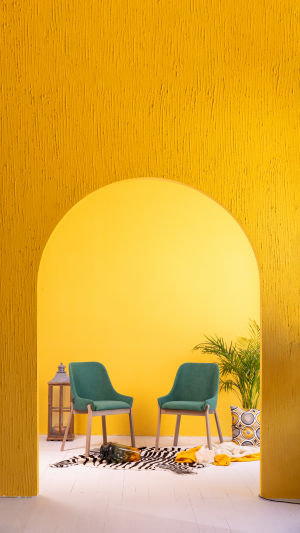The use of arches in architecture can be traced back to the second millennium BC when they were first used in Mesopotamian brick buildings. However, it was during the ancient Roman period that arches were systematically used in architecture, as can be seen in the famous Colosseum.
Arches became even more popular during the medieval period in Europe, particularly in Gothic architecture, as exemplified by the Notre Dame de Paris.
Apart from its aesthetic appeal, the arch is also valued for its functionality. It can effectively break down all loads into compressive stresses, thereby eliminating tensile stresses within the structure. This is why arches are often used in bridge construction. Over time, arches have been introduced into a wider range of interior designs.
Arched doors are particularly popular in interior design because they offer a better sense of comfort and can visually extend the space. Designers often use arched doorways to create a sense of randomness that enhances the beauty of the wall shape while shaping the space.
The most common type of arched door is the round arch, which has a classic shape that can blend well with any style. The semi-circular arc at the top line is both rounded and soothing. To enhance the sense of hierarchy, designers often use the form of the round arch in other objects or shapes in the space, such as mirrors set into a round arch.
Another type of arched door is the flat arch, which can be seen as inverted rounded corners. The top of the door has a horizontal line with inverted arc rounded corners at the top two corners. This form is called the flat arch and is particularly suitable for use in doorways that are low or have abrupt beam structures.
It helps to soften the angular cold stiffness of the space while retaining the sense of the horizontal direction of the line.
Pointed arches, on the other hand, have a narrow and sharp top arc that gives the visual illusion of expanding the height of the floor. This is because of the overall long and thin form of the pointed arch.
When it comes to choosing colors for the arches, contrasting colors or color schemes with a relatively large difference in brightness can enhance the visual sense of space. For example, orange in front of the doorway and blue behind the doorway are excellent pairs of clashing colors.
Alternatively, the same color can be used on both sides of the doorway with slight differences in shades. Adding some simple pattern decoration can make the doorway look fresh and clean.
In summary, arches have a rich history in architecture, and they continue to be used widely in interior design. The arch is not only appreciated for its aesthetic beauty but also for its functional value. Arched doorways, in particular, are popular for their ability to enhance the sense of comfort and visually extend space.
Designers often use different types of arches, such as round, flat, or pointed arches, to create a sense of randomness, enhance the beauty of the wall shape, and shape the space. Choosing the right colors and patterns can further enhance the visual effect of the arch.





